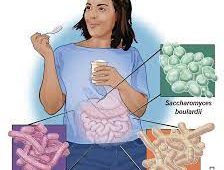As we age, we lose certain bacteria in our digestive tract and the diversity of bacteria is decreased. This will give rise to many unfortunate and unpleasant side effects, like gas and bloating. Our gut dysbiosis can cause poor absorption of nutrients which subsequently leads to deficiencies in vitamin D3, essential amino acids, fatty acids, intestinal hormones that control appetite-related genes in the brain, utilizable iron levels because of elevated hepcidin levels that are produced by the liver.
To relieve, we can use various probiotic supplements and dietary changes. However, some people simply find it hard to tolerate any type of supplement or diet change. This is when they turn to an herbal remedy called “Colon Cleanse”. But you should be careful with Colon Cleanse if you have a chronic disease such as cancer. Different companies use different herbs and concoctions in their products. Some of these ingredients are considered to be beneficial, but some are considered harmful.
Biotin is a B vitamin that can be found in many natural foods, including egg yolks, chicken, salmon, soybeans and peanuts. It is also added to many types of supplements. When taken in excess amounts, biotin can cause drowsiness, tingling of the lips and feet. Some people have experienced urinary frequency as well as acne breakouts after consuming high levels of biotin.
What Is Gut Dysbiosis?
Gut dysbiosis has been linked to a wide range of different types of illnesses, from chronic inflammation and diabetes, to diarrhea and fatigue. In this post, we’ll take a look at what gut dysbiosis is including the symptoms and underlying causes. We’ll also tackle some more obscure factors that might be contributing to gut dysbiosis in some individuals. We’ll shed some light on the relationship between gut dysbiosis and thyroid disorders, and we’ll cover a few specific treatments that can be helpful in the process of healing gut dysbiosis.
Gut dysbiosis is an imbalance in the microflora (the bacteria in your digestive system). Instead of there being a healthy mix in your gut, there is an overgrowth of bad bacteria and/or yeasts, or an undergrowth of beneficial bacteria. These changes in the balance of different microflora can lead to a wide range of symptoms, from an undergrowth of beneficial bacteria, including low heartburn and constipation, to an overgrowth of harmful bacteria such as yeast or fungi.
The causes can be both internal (such as stress, poor food choices and unhealthy gut function) and external (exposure to toxins, infections and other factors). Most commonly, however, these changes will be caused by a combination of both internal and external causes.
Why Is a Healthy Gut So Important?
The human ecosystem begins with the gut. The mouth is an entry point for plants and animals to enter the body, but what happens after they pass through the stomach is where most of our nutrients are absorbed, food is broken down into nutrients, and microbes do their work. That entire process starts in the small intestine. The cells in the small intestine reject toxic substances, and it’s the site of three metabolic processes: digestion, absorption, and assimilation.
The epithelial cells in the small intestine secrete enzymes that break down carbohydrates into monosaccharides, fats into fatty acids and glycerol, and proteins into amino acids. The process of absorbing nutrients through a semipermeable barrier is a very active one and a delicate one. A leak would have far-reaching effects. When the small intestine detects a foreign substance, it sends a signal, which is either absorbed or repelled by the enterocytes. If the signal is absorbed, then the substance can be “transported to the body of its host.” The body is hungry for all that food (a normal occurrence) and yet there’s nothing there to bring home! So it’s up to our nutritional support cells to send messages back through our blood stream advising our stomachs of what we need. The cells in the small intestine also change shape to accommodate larger molecules.
The large intestine is made up of three parts: the ascending colon, the transverse colon, and the descending colon. Most of what we absorb from food is water, but there are other things that we need and this is where our inner ecosystem comes into play again. The microbes in our gut break down plant fibers and produce molecules that we can use to nourish our bodies.



